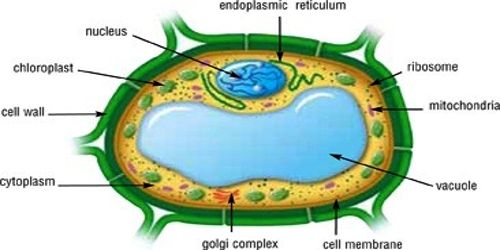5 Vacuole Functions

Vacuoles are membrane-bound organelles found in plant and fungal cells, as well as some protist, animal, and bacterial cells. They are essentially storage compartments that play critical roles in maintaining cellular homeostasis and overall cellular function. The functions of vacuoles can be diverse and are tailored to the specific needs of the cell type in which they reside. Here are five key functions of vacuoles:
Storage of Nutrients and Waste: One of the primary functions of vacuoles is to store nutrients and waste products. In plant cells, vacuoles can store water, salts, minerals, and sugars, helping to maintain cellular turgor pressure and provide the cell with the necessary nutrients for growth and development. In addition to storing nutrients, vacuoles also play a role in recycling and disposing of waste products, thereby maintaining a clean and healthy cellular environment.
Maintenance of Cell Turgor Pressure: In plant cells, large central vacuoles are key to maintaining cell turgor pressure. By regulating the amount of water and salts within the vacuole, the cell can control the balance of fluids and maintain its shape against the cell wall. This is crucial for plant growth and for the plant’s ability to stand upright and withstand environmental stresses.
Digestion and Recycling: Vacuoles contain digestive enzymes that break down and recycle cellular waste and foreign substances that enter the cell. This process is particularly important in certain types of cells, like protozoa, where vacuoles fuse with lysosomes (which contain digestive enzymes) to form digestive vacuoles. These digestive vacuoles then break down ingested food particles, allowing the cell to utilize the nutrients.
Isolation of Harmful Substances: Vacuoles can also serve as storage sites for substances that might be harmful to the cell if they were freely circulating in the cytoplasm. For example, some plants store toxic compounds in their vacuoles as a defense mechanism against herbivores. By isolating these harmful substances within vacuoles, the cell can protect itself from potential damage.
Cell Growth and Expansion: In plant cells, vacuoles play a critical role in cell growth and expansion. As a plant cell grows, its vacuole enlarges, allowing the cell to increase in size without necessarily producing more cytoplasm. This process, combined with the maintenance of turgor pressure, enables plant cells to achieve the large sizes necessary for their functions, such as photosynthesis in leaf cells.
In summary, vacuoles are highly versatile organelles that contribute to various aspects of cellular function and maintenance. Their roles in storage, digestion, osmoregulation, and defense against harmful substances underscore their importance in the survival and efficiency of cells, particularly in plants and fungi.
Understanding the functions of vacuoles also highlights the intricacies of cellular biology and how different components work together to ensure the cell operates efficiently. The unique characteristics and adaptations of vacuoles in different organisms are a testament to the evolutionary diversification of cellular structures to meet specific environmental and physiological challenges.
What is the main function of vacuoles in plant cells?
+The main function of vacuoles in plant cells is to store water, salts, and other substances, helping to maintain cellular turgor pressure and provide nutrients for growth and development.
Do all cells have vacuoles?
+No, not all cells have vacuoles. While common in plant and fungal cells, vacuoles are less frequent or smaller in animal cells, with some exceptions in certain cell types like protozoa.
What is the role of vacuoles in digestion?
+Vacuoles play a role in digestion by containing digestive enzymes that break down waste and foreign substances. In some cells, vacuoles fuse with lysosomes to form digestive vacuoles for this purpose.
In conclusion, the diverse functions of vacuoles illustrate the complexity and adaptability of cellular structures. By understanding these roles, we gain insight into the intricate mechanisms that allow cells to thrive in a wide range of environments and conditions.